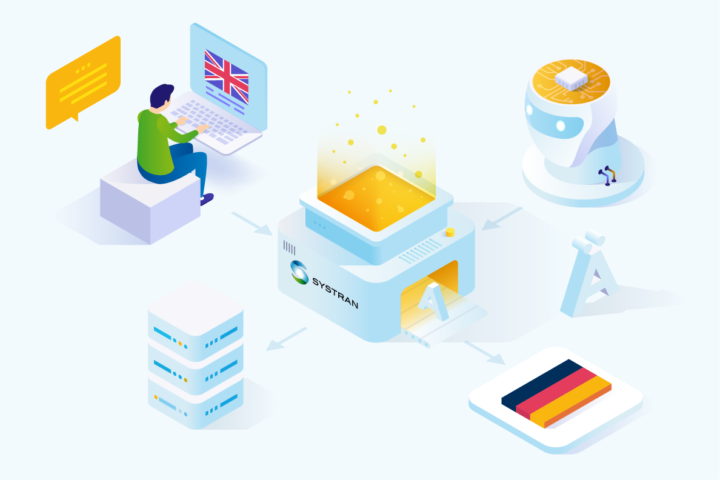In the dynamic landscape of global business, expanding internationally is a goal for many companies seeking to increase revenue, diversify their markets, and gain a competitive edge. However, this expansion comes with the challenge of engaging with diverse audiences across linguistic and cultural boundaries. This is where the power of AI and automatic translation becomes indispensable. These technologies are not just tools for communication; they are essential components of an effective lead generation strategy for acquiring new international customers. This article delves into how AI and automatic translation can drive successful lead generation and customer acquisition in global markets.
The Role of AI and Automatic Translation in Global Expansion
When expanding internationally, businesses must navigate multiple languages and cultural nuances to connect with potential customers. AI and automatic translation solutions facilitate this process by offering:
- Real-Time Translation: Instantaneous translation of content, enabling businesses to communicate with leads in their native language.
- Scalability: The ability to handle large volumes of content across multiple languages efficiently.
- Consistency and Accuracy: Ensuring that the message is conveyed accurately and consistently across different languages.
These capabilities are crucial for generating leads in international markets, where language barriers can otherwise hinder effective communication and engagement.
Leveraging AI for Effective Lead Generation
AI enhances lead generation in several key ways:
- Data-Driven Targeting: AI analyzes vast amounts of data to identify potential leads based on specific criteria, such as industry, location, and online behavior. This targeted approach ensures that businesses reach out to the most promising prospects.
- Personalization: AI-driven personalization tailors content and communication to the preferences and behaviors of individual leads. Personalized experiences are more likely to resonate with potential customers and drive engagement.
- Automated Outreach: AI-powered tools can automate initial outreach efforts, such as email campaigns and social media interactions. This automation ensures timely and consistent communication with leads, nurturing them through the sales funnel.
- Predictive Analytics: AI can predict which leads are most likely to convert into customers, allowing sales teams to prioritize their efforts and focus on high-potential opportunities.
Automatic Translation: Bridging the Language Gap
Effective communication is the cornerstone of successful lead generation. Automatic translation technologies play a pivotal role in this process by:
- Localizing Content: Translating marketing materials, websites, and social media posts into the native languages of target audiences. This localization makes the content more accessible and appealing to international leads.
- Real-Time Customer Support: Providing real-time translation in customer interactions, such as live chats and emails. This ensures that potential customers can communicate their needs and receive timely responses in their language.
- Multilingual SEO: Optimizing content for search engines in multiple languages to improve visibility and attract organic traffic from international markets. This involves translating keywords and phrases that potential leads are likely to search for.
Integrating AI and Automatic Translation into Lead Generation Strategies
To effectively integrate AI and automatic translation into your lead generation strategy, consider the following steps:
- Market Research and Segmentation: Use AI to analyze market data and segment your audience based on factors such as language, culture, and buying behavior. This segmentation allows for more targeted and relevant outreach.
- Content Creation and Localization: Develop high-quality, multilingual content that addresses the needs and interests of your target audience. Use automatic translation to localize this content, ensuring it resonates with international leads.
- AI-Driven Marketing Campaigns: Implement AI-powered tools to create and manage marketing campaigns across multiple channels. These tools can personalize content, automate outreach, and analyze campaign performance to optimize results.
- Multilingual Customer Engagement: Use automatic translation to facilitate real-time communication with leads. This includes responding to inquiries, providing information, and offering support in their preferred language.
- Performance Tracking and Optimization: Monitor the performance of your lead generation efforts using AI analytics. Track metrics such as lead conversion rates, engagement levels, and customer feedback to identify areas for improvement and optimize your strategy.
Conclusion
In the quest for international expansion, AI and automatic translation are not just advantageous—they are essential. These technologies empower businesses to overcome language barriers, engage with diverse audiences, and generate high-quality leads in global markets. By integrating AI and automatic translation into your lead generation strategy, you can unlock new opportunities, build lasting customer relationships, and drive sustainable growth on a global scale.
As the world continues to shrink and digital connectivity expands, the importance of these technologies will only grow. Embrace the power of AI and automatic translation today, and position your business for success in the international arena.






